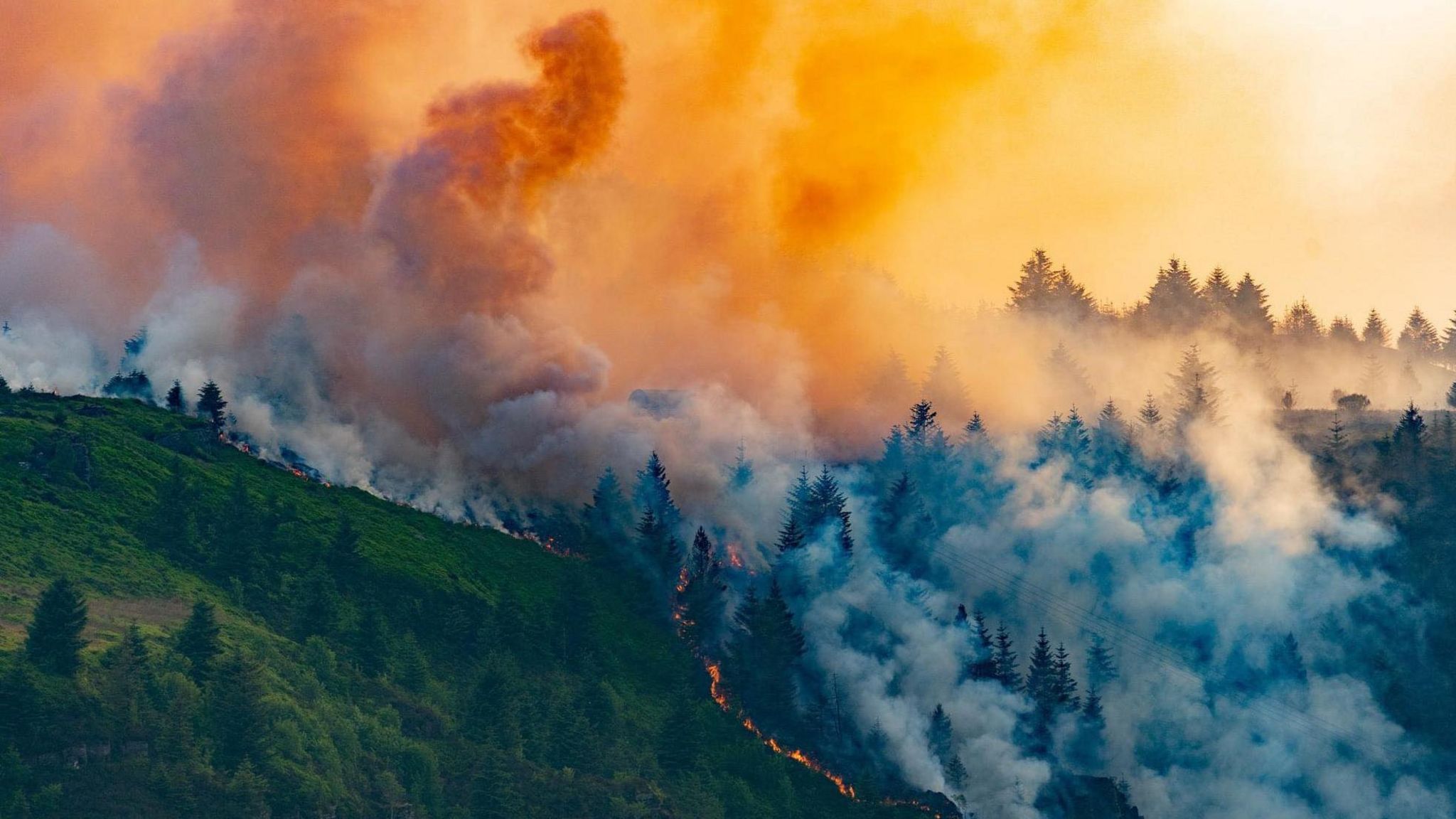Wildfire ash studied to determine health risks

Lucy Vladev
BBC Wales news
Smoke and ash from wildfires in Wales is being studied by scientists who are trying to determine the health risks.
Researchers from Swansea University developing a wildfire danger rating system for the UK which will predict fires further in advance
Wales has had 494 wildfires in 2023 so far, with the added risk that the ash can contain higher-than-usual levels of heavy metals.
One fire at Rhigos mountain in Rhondda Cynon Taf burned for seven days and damaged more than 100 acres of land.
It was one of five major incidents that South Wales Fire and Rescue Service was dealing with at the time, meanwhile Mid and West Wales Fire and Rescue Service had six.
The smoke and ash left behind is now the focus of a team of scientists at the Centre for Wildfire Research, who have been taking water samples at Rhigos to check the impact on drinking water quality.
Scientists are testing the reservoir at Rhigos mountain for pollutants
Prof Stefan Doerr, who is leading the project, said: “Wildfire smoke is affecting individuals’ health but also the water supply.
“Here in south Wales we did have a lot of contamination from past industrial activity and still some current industrial activity, so the vegetation carries a lot of heavy metals, for example.
“If you burn these they are enriched in the ash, if this ash moves into river systems, into reservoirs and it’s not just the metals it’s other aspects as well, they can contaminate them.”
Prof Stefan Doerr from Swansea University is leading the project
The team is also sampling vegetation at different times of the year to provide a clearer understanding of how dry it is under different conditions.
Prof Doerr said that was “essential to predict the risk of the fire not just igniting, but also carrying through the landscape and how quickly it carries through the landscape”.
The data gathered is helping with developing a Wildfire Danger Rating System for the UK, which will help to predict in advance where and how intense fires will be.
The ash from burning vegetation can contain toxic materials
A spike in the number of fires usually happens between March and April, although it is very weather dependent.
Experts said there was “no doubt” there will be more extreme fires in the future, with the fire service warning the hotter and drier conditions are making conditions “more severe”.
Craig Hope is a group manager with South Wales Fire and Rescue Service and a Wildfire tactical advisor for Wales.
He has been working with partner agencies to try and adapt techniques for the Welsh landscape.
“You can’t adopt everything, you have to adapt them to our conditions. We don’t have lots of aerial resources we have one helicopter, we don’t have lots of off-road fire engines we have standard fire engines and some 4×4 fire engines so our tactics will be different.”
Most of the fires they are called to are started deliberately and drier conditions mean they are “much more difficult to put out”.
The results from the study will be known in the coming months and it is hoped they will help to build better protection for communities.








